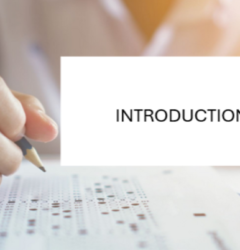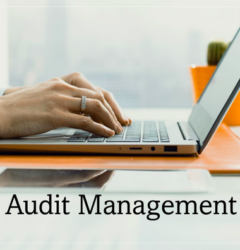

1. Introduction
This Request for Proposal (RFP) is issued by [Your Organization’s Name] to solicit proposals from qualified vendors for a Governance, Risk, and Compliance (GRC) solution. Request for Proposal Template for a GRC product should support the organization’s need to manage compliance with multiple international, regional, and industry-specific regulations and standards, automate risk management processes, and enhance the security posture through centralized GRC activities.
2. Proposal Submission Instructions
– Submission Deadline: [Insert Date]
– Method of Submission: [Insert Method of Submission]
– Contact Person: [Name, Email Address]
– Required Proposal Format: PDF
– Proposal Validity: [Insert number of days]
3. Scope of Work
The vendor must provide a GRC solution that can be deployed as a SaaS solution, in the customer’s cloud environment, in the customer’s data center, or on-premises. The solution must offer full support for managing policy lifecycle, risk, third-party management, compliance frameworks, vulnerability management, and auditing functions while ensuring flexibility for future regulatory changes.
4. Functional Requirements
4.1. Compliance Frameworks & Controls Management
1. Policy Life Cycle Management:
– Create, review, approve, and retire policies.
– Track policy versioning and maintain history.
– Automatic notifications for policy reviews and approvals.
– Policy mapping to regulatory requirements and standards.
2. Compliance Frameworks:
– Support for frameworks such as –International Standards ( ISO 27001:2022, SOC 2 Type 2, ITGC SOX (Sarbanes-Oxley), NIST, and others.
-Support for regional Standards: RBI, SEBI, IRDAI, NFBC,
– Flexibility to add and customize controls from other industry or regional frameworks.
– Ability to create and manage a custom Unified Controls Framework that consolidates controls across multiple frameworks.
– Automated mapping of controls to policies, risks, and evidence.
3. Controls Testing:
– Automated workflows for testing controls.
– Pre-defined test cases for common frameworks.
– Integration with security tools for automated control testing.
– Tracking of test results, remediation actions, and retesting.
4.2. Automated Evidence Life Cycle Management
– Automated collection and management of compliance evidence.
– Centralized repository for storing evidence with proper version control.
– Integration with third-party systems and security tools to gather evidence automatically.
– Audit trail for evidence collection and updates.
4.3. Risk Management
1. Risk Register Automation:
– Centralized risk register with capabilities to track risks, assign owners, and manage mitigation plans.
– Automated risk scoring and impact analysis.
– Risk mapping to policies, controls, and incidents.
– Real-time risk updates from integrated security tools and incident response systems.
2. Third-Party Risk Management:
– Comprehensive third-party risk assessment.
– Vendor onboarding and risk scoring workflows.
– Automated monitoring and re-assessment of vendor risks.
– Integration with third-party risk databases.
3. Vulnerability Management:
– Integration with vulnerability scanners (e.g., Qualys, Nessus, etc.).
– Automated risk mapping and prioritization of vulnerabilities.
– Vulnerability remediation workflows and tracking.
4.4. Role-Based Access Control (RBAC)
– Mandatory Role-Based Access Control (RBAC) with the following roles:
–Auditor: Access to audit reports, findings, and evidence.
–Auditee: Provide evidence for specific audits.
–Audit Manager: Manage audits, review findings, and assign tasks.
–Policy Manager: Manage the entire policy lifecycle.
–Risk Owner: Manage and mitigate assigned risks.
–Compliance Manager: Oversee and manage compliance frameworks and control testing.
– Customizable roles to suit organizational structures.
4.5. Dashboards & Reporting
– Customizable dashboards for real-time insights into GRC metrics.
– Comprehensive reporting tools for compliance, risk management, and audit findings.
– Pre-configured reports for specific frameworks (ISO, SOC2, etc.).
– Export capabilities in PDF, Excel, and other common formats.
5. Non-Functional Requirements
5.1. Deployment Options
– The solution must support the following deployment options:
– SaaS (Software-as-a-Service).
– Deployment in the customer’s cloud environment (AWS, Azure, GCP, etc.).
– On-premises deployment in the customer’s data center.
5.2. Security & Compliance
1. Data Security:
– Encryption of data at rest and in transit (minimum AES-256).
– Role-based access control (RBAC) with audit trails for user activities.
– Multi-factor authentication (MFA) for all user logins.
– Single Sign-On (SSO) support via SAML or OAuth.
2. Compliance with Security Standards:
– SOC 2 Type 2, ISO 27001:2022, and GDPR compliance.
– Integration with Identity Access Management (IAM) systems.
3. Audit Logs:
– Detailed audit trails of user actions and system changes.
– Configurable retention period for audit logs.
5.3. Performance & Scalability
1. Performance Requirements:
– High availability (99.9% uptime) and minimal latency.
– Performance guarantees for response times in high-load conditions.
2. Scalability:
– Support for large-scale deployments with thousands of users and multiple compliance frameworks.
– Horizontal and vertical scaling to accommodate increasing workloads.
5.4. Disaster Recovery & Business Continuity
1. Backup & Recovery:
– Daily automated backups with configurable retention policies.
– Backup and recovery processes with minimal downtime.
2. Disaster Recovery:
– Disaster recovery plan with clearly defined Recovery Time Objective (RTO) and Recovery Point Objective (RPO).
5.5. Support & Maintenance
– 24/7 customer support with SLA-backed response times.
– Regular product updates, including security patches and new features.
– Documentation and training resources for end-users and administrators.
– Access to a dedicated customer success manager.
6. Evaluation Criteria
Proposals will be evaluated based on the following criteria:
– Compliance with Functional Requirements (30%).
– Compliance with Non-Functional Requirements (20%).
– User Experience and Usability (15%).
– Integration Capabilities (10%).
– Security and Data Protection Features (10%).
– Vendor Reputation and Expertise (10%).
– Cost and Licensing Model (5%).
7. Pricing Model
Vendors must provide a detailed pricing model, including:
– Costs for each deployment option (SaaS, customer cloud, on-premises).
– Licensing model (user-based, site-based, etc.).
– Pricing for add-ons (e.g., additional features, custom frameworks).
– Support and maintenance costs.
– Customization fees, if applicable.
8. Timeline
– RFP Release Date: [Insert Date].
– Questions Due: [Insert Date].
– Proposal Submission Deadline: [Insert Date].
– Vendor Demonstrations (if applicable): [Insert Date].
– Contract Award Date: [Insert Date].
9. Contact Information
– Name: [Your Name].
– Title: [Your Title].
– Email: [Your Email Address].
– Phone: [Your Contact Number].
10. Terms and Conditions
– All proposals become the property of [Your Organization’s Name] upon submission.
– Proposals must remain valid for at least [X] days.
– [Your Organization’s Name] reserves the right to reject any or all proposals without notice.
—
This RFP template is designed to gather proposals for a comprehensive Cyber Governance, Risk, and Compliance (GRC) product with key features tailored to address modern regulatory needs while maintaining flexibility for future requirements and scalability.














Recent Comments